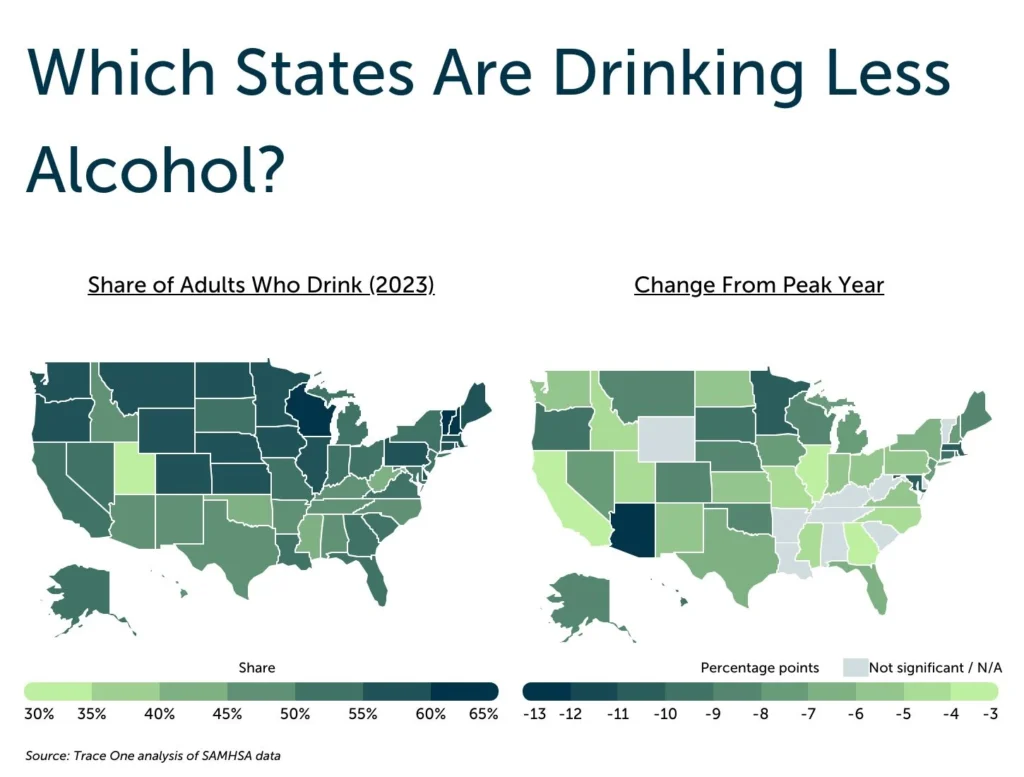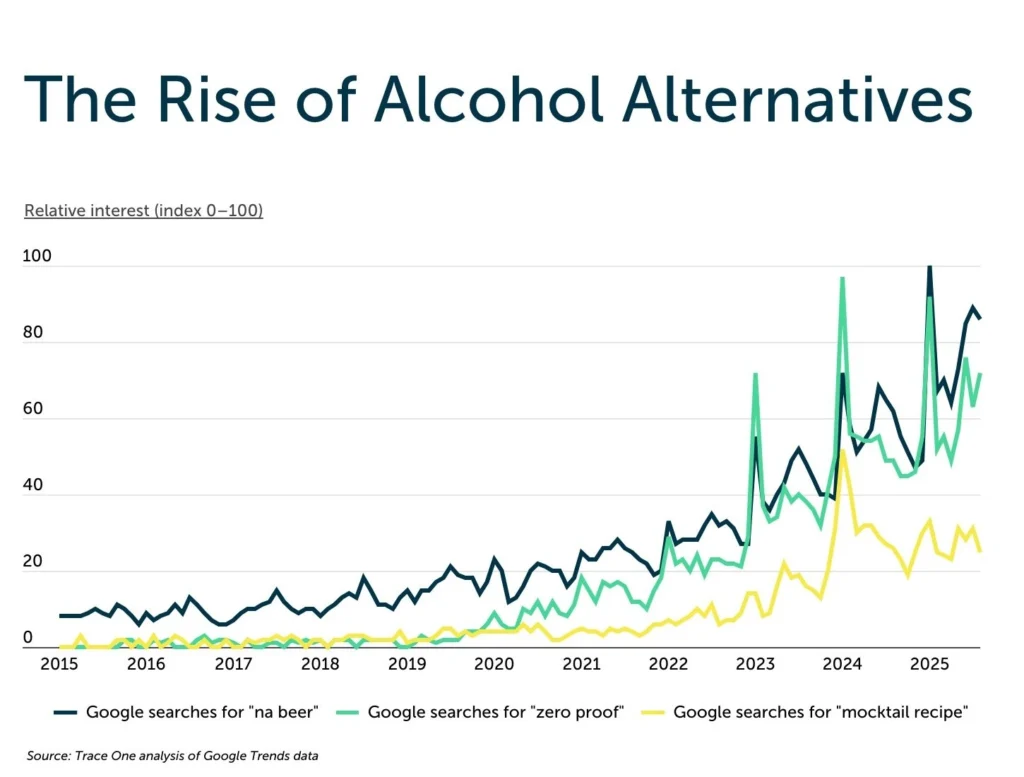Survey Shows Exactly Where Booze Is Losing Its Buzz in the US

Drinking rates are plummeting nationwide, and the data shows exactly where alcohol alternatives are bubbling up fastest
Americans are trading bar tabs for wellness shots, with a recent Gallup poll finding U.S. drinking at record lows, led by young adults ages 18 to 34.
But what states are drinking less booze? We now have answers thanks to a new analysis by food and beverage SaaS company Trace One , which pulled from the Substance Abuse and Mental Health Services Administration (SAMHSA). The study examined past-month alcohol use among adults 18 and older, comparing each state’s current rates with its historical peak to show where consumption has fallen most sharply.
The numbers don’t lie. Some states are sobering up fast. Arizona tops the list with the steepest decline, down nearly 13 percentage points from its peak. Minnesota and Massachusetts followed with double-digit drops, while Maryland, Oregon, Hawaii, Colorado, and Montana all saw sizable pullbacks of eight to 10 points.
The South tells a different story. As the report notes, drinking has always been less common across much of the region, but in states like Alabama, Kentucky, and Louisiana, rates have stayed steady rather than sliding further, even as other parts of the country scale back.

On the flip side, northern states still dominate when it comes to the highest shares of adults cracking open the beer cans and pouring cocktails in 2023. Vermont and New Hampshire lead at around 63% of adults, with Wisconsin, North Dakota, Massachusetts and Rhode Island close behind. By contrast, states across the Southeast and parts of the Mountain West, such as Utah (31.1%), West Virginia (40.8%) and Mississippi (42.2%), report far lower rates of alcohol consumption.
Declining alcohol rates tell only half the story. The other half is about what’s replacing it: a booming market of NA beers, zero-proof cocktails and functional beverages quickly reshaping bar menus and grocery shelves.
Trace One’s analysis, drawing on Google Trends, shows searches for “NA beer” have surged nearly tenfold in the past decade, while terms like “zero proof” and “mocktail recipes” have become mainstream, each hitting record highs in recent years.

It’s a new demand that has flipped the script for beverage makers, especially in the non-alcoholic beer space. What was once synonymous with O’Doul’s (Anheuser-Busch’s 1990-era NA pioneer) has been rebranded as a wellness-forward category thanks to Athletic Brewing, which proved that a non-alcoholic beer could taste like a craft brew, build a cult following and even be marketed to athletes. In many ways, the brand opened the floodgates: today, Heineken, Guinness and Budweiser all sell NA versions of their beers, while spirits makers are churning out zero-proof whiskey, gin and tequila alternatives for the sober-curious and wellness-focused crowd.
Fitness and wellness brands are paying close attention. As more consumers swap cocktails for kombucha or NA beer, gyms, studios and wellness clubs are offering them at community events. SoulCycle recently partnered with The Zero Proof to host post-class pop-up tastings at its Hamptons studios in New York, giving riders the chance to sample and buy premium non-alcoholic drinks ahead of a national rollout.
Life Time, the luxury athletic country club, also recently celebrated the launch of its new reformer-based class at select locations with an invite-only preview and social event at Life Time Irvine’s Beach Club featuring non-alcoholic LTH Mocktails.
And it’s just the beginning. Later this month, global sober dance movement Daybreaker will team up with clean-label brand FlavCity to co-host a massive alcohol-free dance party at Gitano NYC on September 27, featuring a morning workout led by Housework founder Sydney Miller and a headline set from Austin Millz.



